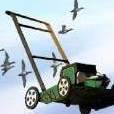Fuel Pressure
-
Members Online
- bigmo
- Bartman
- M20F-1968
- Aaviationist
- Meshach
- Dialed In
- MDMooney
- TCC
- Bolter
- tcal780
- Pasturepilot
- Reichart162
- bushuenj
- JoeM
- EricJ
- PeteMc
- Skinnypilot
- Skyland
- Niko182
- AndreiC
- Blaze
- Brian2034
- AF M20J
- pirate
- Hudd
- AspiringOwner
- Stan
- DXB
- Marc_B
- T. Peterson
- Rick Junkin
- exM20K
- ohdub
- 1967 427
- Mooney in Oz
- philiplane
- atpdave
- ArtVandelay
- IvanP
- NJilek


Recommended Posts
Join the conversation
You can post now and register later. If you have an account, sign in now to post with your account.